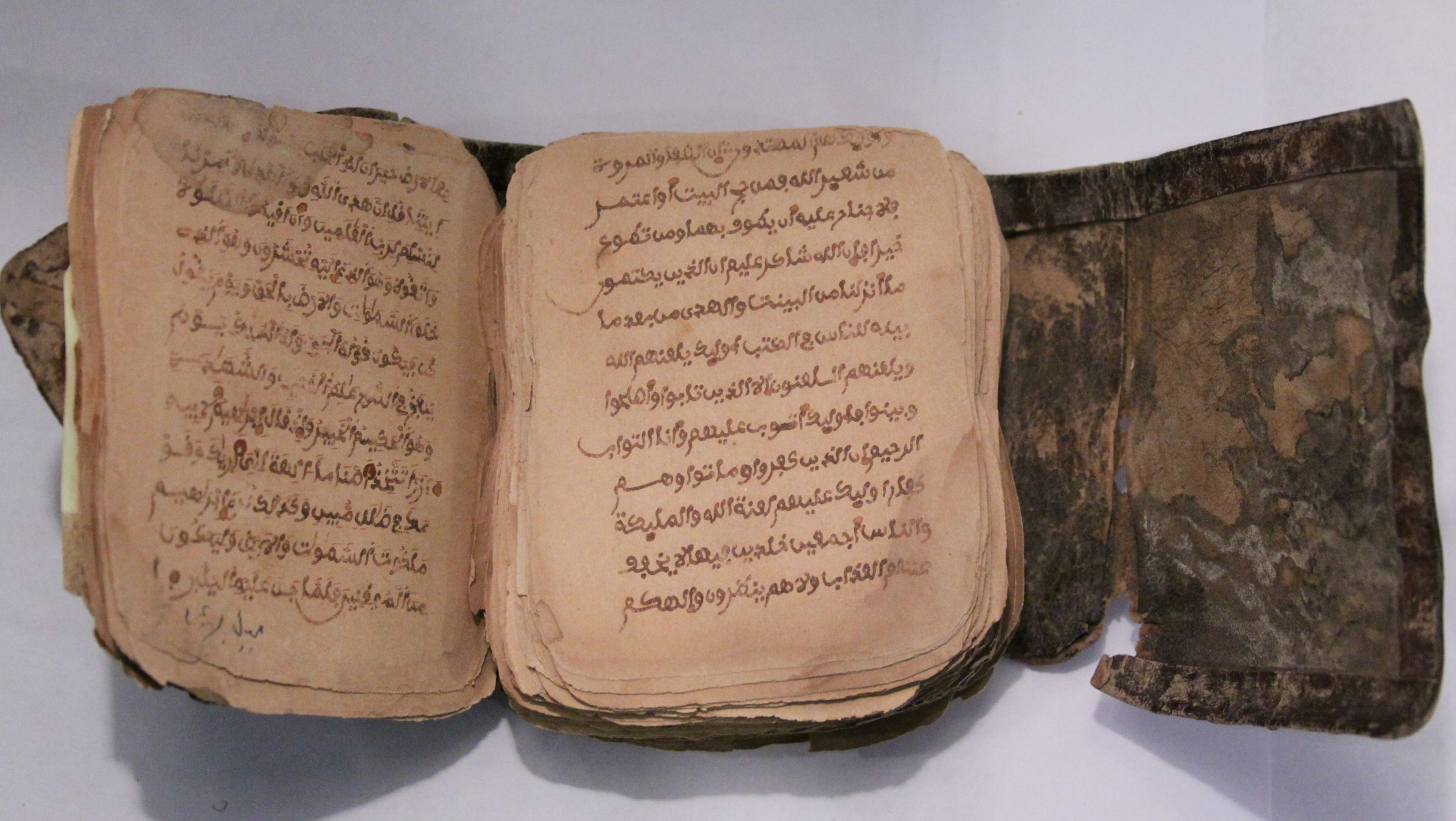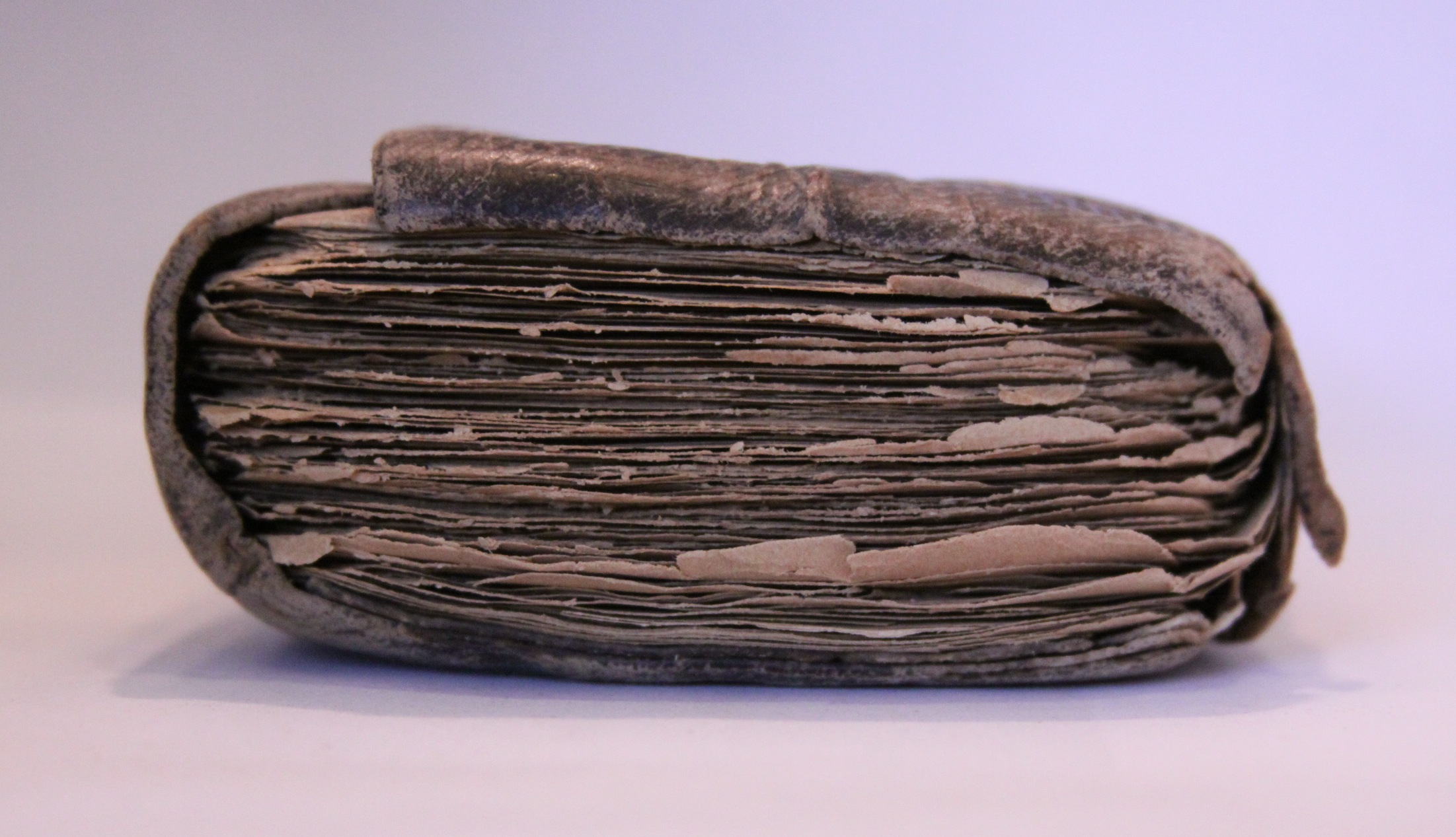by Jean Lefe Ag Nouh and Curt Meyer*

Qur’an manuscript from North Africa, 16th century; Yattara Family Private Library, Timbuktu. All images courtesy of Yattara Family Private Library.
Access to specific Qur’an manuscripts is important for the study of the Qur’an’s manuscript history and material culture. While physical access to manuscripts is often limited, access to digital images helps researchers gain ready familiarity with Qur’an manuscripts, make expeditious research travel plans, and sustain their research wherever they go. The Yattara Family Private Library is pleased to share with IQSA some images and a physical description of a 16th-century North African Qur’an manuscript held in our collection in Timbuktu, Mali. It is a valuable example of local traditions for the representation and preservation of the Qur’an text.
 The manuscript is a complete Arabic text of the Qur’an, written over 500 pages on 250 parchment folios, probably of sheep skin. The folios are bound in a leather cover of goat skin. The book measures 11.5 x 4.75 in. (29.84 x 12.06 cm.) when fully opened, with a height of 2 in. (5.08 cm.) when closed. Each leaf measures 4.75 x 4.50 in. (12.06 x 11.43 cm.).
The manuscript is a complete Arabic text of the Qur’an, written over 500 pages on 250 parchment folios, probably of sheep skin. The folios are bound in a leather cover of goat skin. The book measures 11.5 x 4.75 in. (29.84 x 12.06 cm.) when fully opened, with a height of 2 in. (5.08 cm.) when closed. Each leaf measures 4.75 x 4.50 in. (12.06 x 11.43 cm.).
This Qur’an manuscript was previously displayed at the Detroit Institute of Arts for three years, and is currently under consideration for acquisition by the African Art department of  the High Museum in Atlanta. It will be featured at the High Museum’s Collectors Evening on 31 January 2015.
the High Museum in Atlanta. It will be featured at the High Museum’s Collectors Evening on 31 January 2015.
Manuscripts in the Yattara Family Private Library date back as far as the 12th century, and cover a diverse array of literary fields, including theology, mathematics, astronomy, and law. The carefully preserved and highly revered manuscript collections in Mali (Timbuktu, Jenne, and Gao) collectively represent a major hub for the rich development and global influence of the African literary heritage.
* Jean Lefe Ag Nouh is owner of the Yattara Family Private Library in Timbuktu, Mali, West Africa. Curt Meyer is the Library’s Representative.
© International Qur’anic Studies Association, 2014. All rights reserved.
